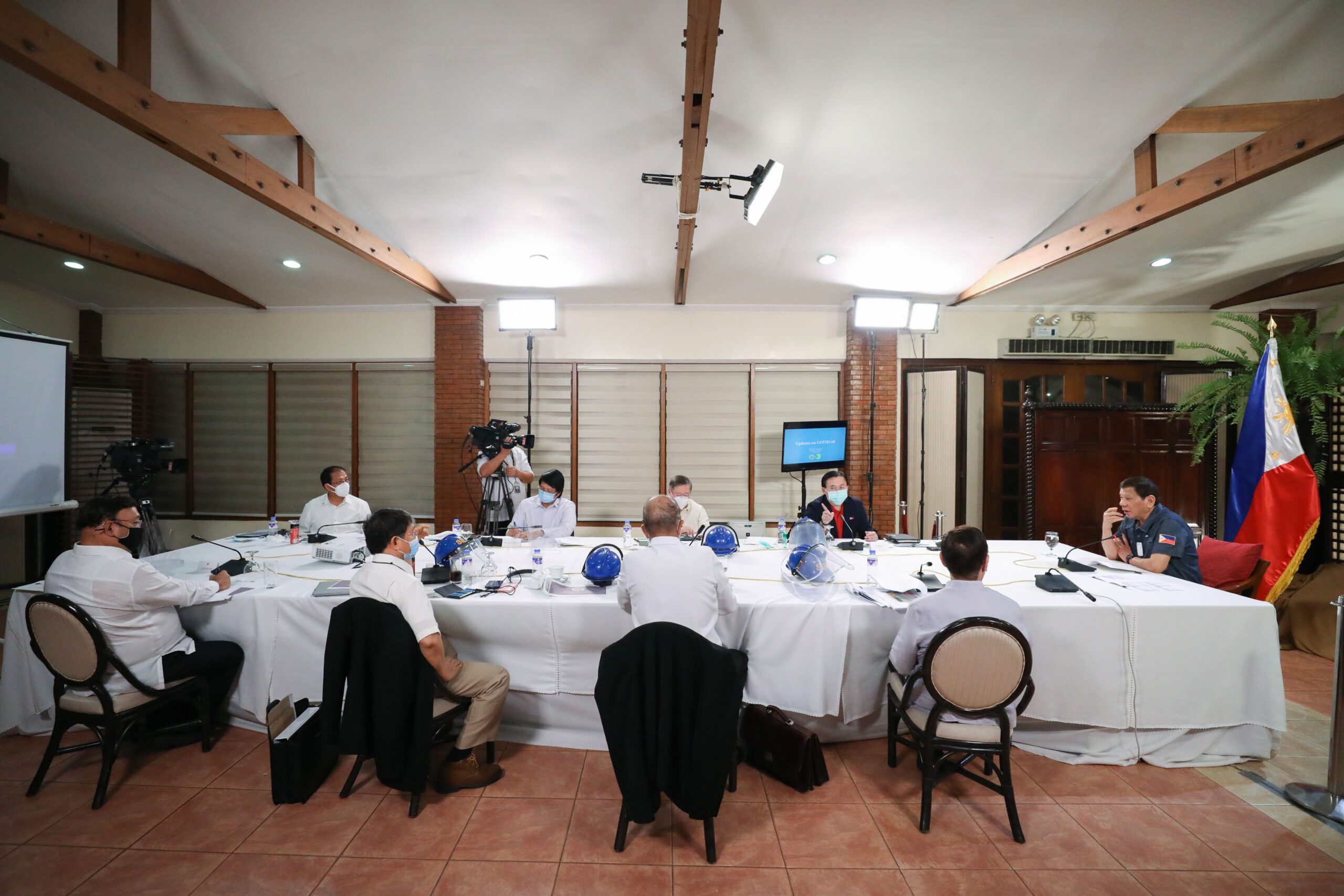SUMMARY
This is AI generated summarization, which may have errors. For context, always refer to the full article.

Meetings conducted through online platforms like Zoom have become a fixture in coronavirus lockdown life.
The same is true even for one of the most important government meetings – those of the Inter-Agency Task Force on Emerging Infectious Diseases (IATF-EID) and local government executives.
This meeting is different from that of the IATF-EID and President Rodrigo Duterte, which are conducted physically, at the Malago Clubhouse on Malacañang grounds.
The meetings with mayors and governors, held at least once a week, are critical because they link task force officials in charge of nationwide policies and resources with local governments which implement the policies on the ground.
Because of quarantine measures, face-to-face meeting are difficult, forcing officials to resort to Zoom.
But as anyone who’s tried to hold a meeting online knows, it’s just not the same.
Some officials have to admit, lots of things get lost in the confusion of those Zoom meetings, where mayors and governors must speak to the task force members.
“It’s very difficult to participate,” said one official present at the meetings.
“Imagine a Zoom meeting with 60 to 80 participants,” said the same official.
The meeting involves governors, mayors, Interior Secretary Eduardo Año, Coronavirus task force chief implementer Carlito Galvez Jr, Health Secretary Francisco Duque III, and their undersecretaries. President Rodrigo Duterte has never joined any of these meetings, which typically last around an hour or two.
Most local government chiefs use this time to ask for more funding, especially for low-income families and those who have lost their livelihood due to lockdown measures.
A few give suggestions on testing and quarantine strategies.
Apart from unclear audio, virtual meetings make it hard to read body language and gauge the sentiments of fellow meeting participants, seemingly small things that local government leaders use when trying to forge consensus or convince others of their stand.
At least one official thinks this state of affairs is why some rules announced by the national government don’t make sense when implemented on the ground.
Examples are rules like 18 to 20-year-olds not allowed to work even under general community quarantine (GCQ) or members of the same household not allowed to ride their motorcycle together because of the guidelines against back riders.
But it’s not for lack of trying. The Zoom meetings are moderated and every official who has something to say is given his or her turn.
Then there’s the issue of security. With Zoom’s rise in popularity due to the global lockdown, users have complained about “Zoom-bombing,” when people not invited to a Zoom meeting are able to access it and disrupt or listen in on the discussion. Zoom has tweaked its security features since.
The challenge for government is to make these online meetings as effective and secure as possible because the matter up for discussion is life or death.
Other important government discussions have been moved online. The House committee on coronavirus response held a meeting online on April 28, as did the Senate committee on public services on May 11. The Supreme Court held its first virtual session on April 17. Metro Manila mayors have also met on Zoom. – Rappler.com
Add a comment
How does this make you feel?
There are no comments yet. Add your comment to start the conversation.